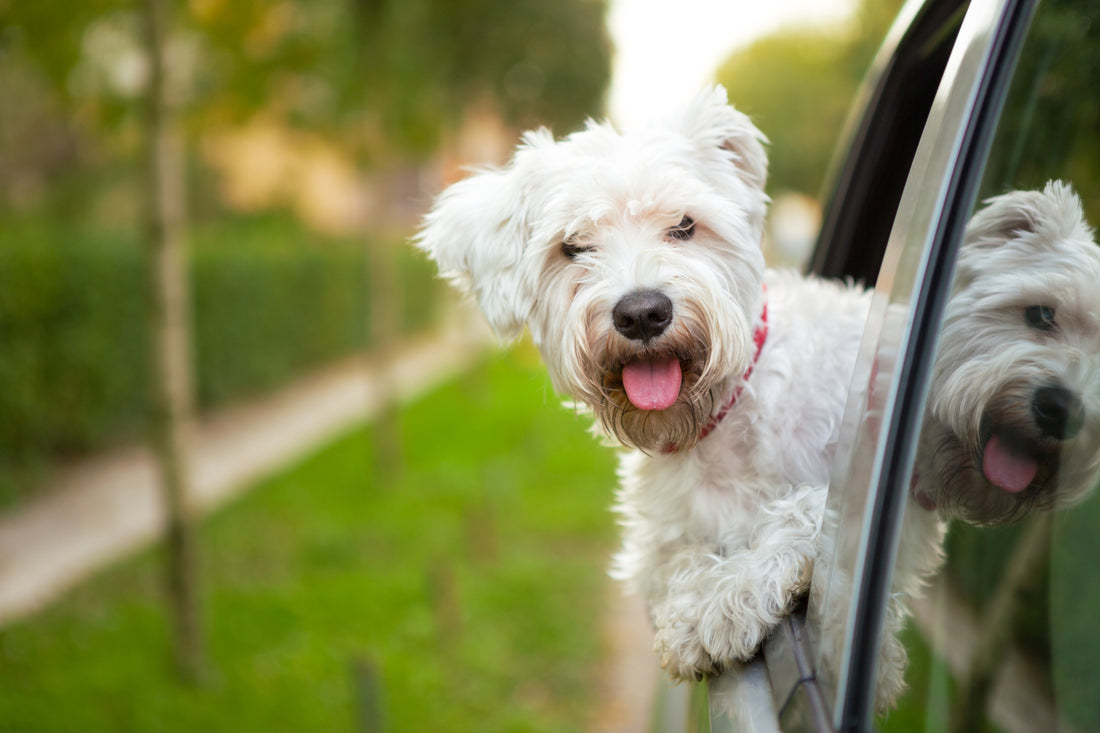
What You Need To Know About Dogs And Motion Sickness, Part Two
Michelle at Vet Organics Tags: dog health (68)dog treats (2)ecotreats (42)
Yes, dogs end up with motion sickness more often than many guardians realize. That queasy, restless feeling isn’t pleasant for anyone. And our fur babies don’t have the ability to take a quick dramamine. So, we’ve create this helpful guide to take guardians from basics to advanced care of motion sickness in dogs. For anyone who isn’t sure what motion sickness symptoms are, or who wants ways to help prevent motion sickness, check out Part One in this series. For the best tried-and-true ways to cure motion sickness in dogs, learn more here.

Essentials: Ways To Cure Car Sickness In Dogs
Planning. The best cure for motion sickness in dogs, above all others, is preparedness. Plan trips so there will be breaks from the car ride. Build in walks and extra overnights, if needed, to ensure it’s not just one long trip. While the breaks won’t keep motion sickness from returning, it will provide a bit of a break, and will help delay onset each time we begin to travel again.
Bring water. Stress causes dehydration, so keeping water available is one of the best ways to keep our pups from becoming even more uncomfortable.
Cool and safe. Some pups love putting their head out of the window. However, other pups don’t care for stinky tailpipe wind in the face. And it’s often noisy, especially if there’s traffic, which can add to the fear factor. Try letting them put their head out, but we should also practice using climate control. We can always add a layer or two, but our pups can’t do much to cool down when they need to, and stress increases body temperature.
 Don’t push too many treats. Lot’s of guardians want to comfort their pups but end up doing so by offering lots of treats. While treats are a few second of comfort, they can add to digestive discomfort. Keep to low-calorie, all-natural treats that are delicious to dogs, like EcoTreats, but limit intake.
Don’t push too many treats. Lot’s of guardians want to comfort their pups but end up doing so by offering lots of treats. While treats are a few second of comfort, they can add to digestive discomfort. Keep to low-calorie, all-natural treats that are delicious to dogs, like EcoTreats, but limit intake.
Limit food intake. An empty stomach can help reduce nausea. For long trips, our pups will certainly need to eat. However, plan on leaving in the morning and withhold food 12 hours before departure time. This is especially important for flights and boat trips when we may not have access to our pups.
Quiet and serene. Even though we may love loud show tune sing-alongs in the car, that may not be the best environment for Fido. We can keep anxiety to a minimum by playing soft music, something we know our dog likes or nothing at all.
Smells like home. Our pups are connected to olfactory stimulation. Bringing a blanket from home, a t-shirt that smells like us, a favorite toy or two, and even Fido’s bed can all help to keep him calm and feeling safe.
Already using these methods? No problem. We’ve got more ideas and tips to help every fur family stay calm and motion sickness free. Watch for Part Three in this series on dogs and motion sickness.
Further Reading:
“What To Do If Your Dog Gets Motion Sickness,” Whole Dog Journal
“Dogs and Motion Sickness,” PetMD
“Car Sickness in Dogs,” AKC
